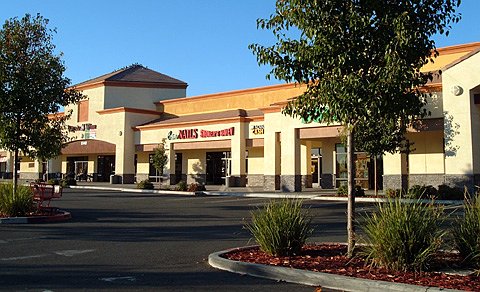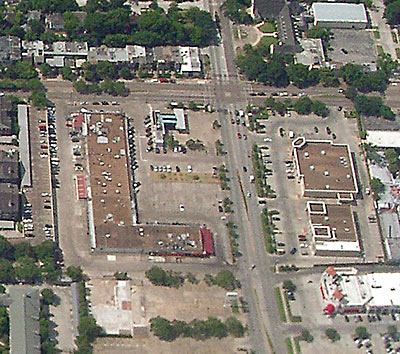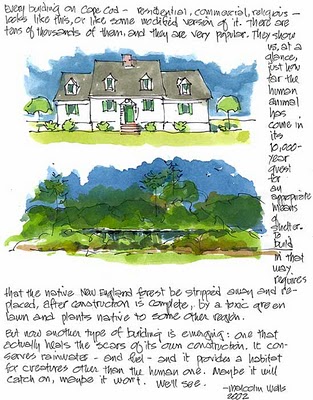Please read to the end: there is an invitation for designers and architects to submit work to Eco Brooklyn.
After hearing that Malcolm Wells, pioneer of underground architecture, had died I bought a couple of his books and read up on him.
I regret not meeting him when he was alive. He had a great sense of humor and a very important vision.
I just finished reading one of his 20 books called “Recovering America, A more gentle way to build” and found it to be a true inspiration.
A university gave him a grant. They basically said, “Here is some money, you are cool.”
What he did with it was to travel around the US looking at it from above, because as he writes, “We look at architecture the wrong way: sideways.”
If you take a shopping mall for example and look at it from the ground, it may look ugly, but with the help of a few strategically placed shrubs and trees it doesn’t look that bad. But if you look at it from above you see it for what it really is: a massive blight.
Take this view of a shopping mall:

Looks nice enough. It has trees, some little gardens.
But if you look at a shopping mall from above you see that the trees are placed along the road to be seen from the car but they are simply pathetic screens hiding a wasteland of concrete and bad architecture:

Nature has been paved over and destroyed. And this is the way 99% of building happens. You rip up the earth, build your structure and then strategically plant some nature to pretty up the damage.
Needless to say Wells’ pictures are sobering. But he is lighthearted about it, pointing out that is we were capable of building so much we are also capable of building nature back up.
How did we get to this point of natural destruction? Instead of accusing humanity with anger he does it with understanding and compassion. He writes that we destroyed nature with “Ignorance, self-centeredness, short-sightedness….But not cruelty. We destroyed it in total innocence.”
His solution to our mess? Underground architecture, which isn’t really under the existing ground but structures that are built out of concrete and then strategically covered with earth. Thus the title, “Recovering America”. His buildings still have lots of windows and sunlight but their roofs and parts of the walls are under earth.
Take for example his underground Cape Cod drawing:
You might be wondering, “Where is the house?” but it is there and if you lived in the house it wouldn’t appear any different than a normal house from within or if looking out its windows. You can have the same floor plan and views. The only difference is that it is a little lower in the ground and the roof is overgrown.
But the difference to the world is MASSIVE. It remains a natural ecosystem for nature while performing double time as a home for humans.
Notice also the hand written text. His book is hand written in a very informal tone. He has snap shots of his wife for no reason than he wants you to see her. It is not connected directly to architecture but indirectly it says everything: it says that architecture is a deeply personal thing connected to our daily lives and nature.
He really gets this. He has a deep faith in nature and humanity. And despite his clear awareness that we’ve really fucked up in a big way, he remains hopeful in this book that we will DIG our way out of it.
In the digging is his solution: underground houses. I think he is right.
The only problem is that his houses are not in Brooklyn where we don’t have an acre or two to design earthen berms and slanted slopes leading up to the walls and roof of the house.
So my invitation to you dear reader, if you are design inclined, is to send me designs of underground Brownstones! How can we take the existing Brooklyn brownstone and implement more of Malcolm Wells vision?
I think the first place to start is by digging out into the gardens. We can take the basement and extend it into the garden, then cover it with earth so that the garden is multilayered. The extention could have skylights, clerestory windows or sliding glass doors that give onto the garden.
I think we can also use the Hunderwasser style of house as further guidance. Maybe not his Gaudi style but certainly his love for covering buildings in nature.
For example:
So get inspired and submit your designs! We’ll post them and get clients to build them! Oh yea, also buy Malcolm Wells’ books. They are great inspiration.


